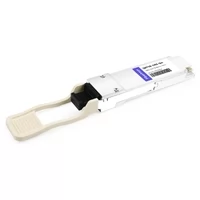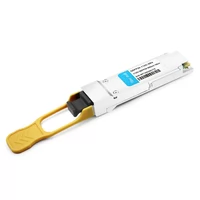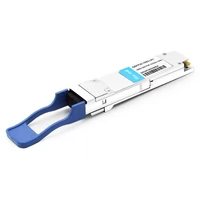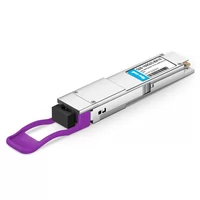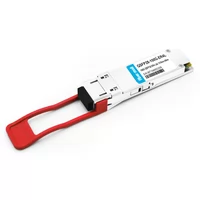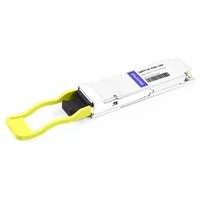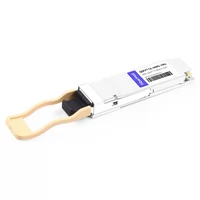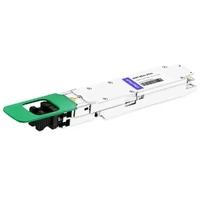As the world becomes more interconnected, there is a need for efficient and high-performing communication systems that never stop growing. Transceiver modules are at the center of these systems as they enable data to be sent and received over different types of networks. The purpose of this manual is to simplify transceiver modules by giving an in-depth explanation of what they do, their various kinds, and where they can be applied. Whether you work as a network engineer, have a keen interest in technology, or just want to know more about how things are done in today’s digital communication industry then, this article will give you those basics that will make everything clear about transceiver modules as used in today’s digital world.
Table of Contents
ToggleWhat is a Transceiver Module and How Does It Work?
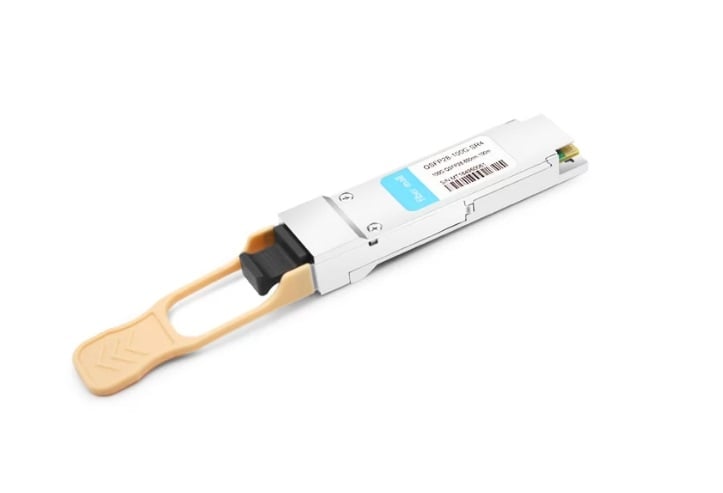
Understanding the Basics of Transceiver Modules
A transceiver module is a unit that contains both the features of a transmitter and a receiver. These devices are employed in communication systems to transmit and receive electrical or optical signals. It is used to convert electric signals into optic ones or vice versa so that data can travel through optical fibers or any other long-distance transmission media. Such modules usually include lasers/LEDs (for transmission), photodiodes (for reception), and electronic circuits for signal processing and modulation, among others. When all these parts work together seamlessly, the transceiver module ensures fast data communication with low signal attenuation or distortion through noise interference.
The Role of Transceivers in Network Connectivity
To keep strong network connections, transceivers are important because they convert electric signals into optical and vice versa, thus making it possible to send information over long distances through optical fiber cables. They ensure that different network parts, like switches, routers, or servers, can talk to each other by converting signals quickly and effectively. Transceivers can transmit data very fast, which helps them meet the needs of current applications in terms of bandwidth, hence reducing delays and improving general performance across networks. Modern communication systems heavily rely on transceivers since they are capable of both sending and receiving signals, thus making such systems reliable and efficient.
How Do Optical Transceivers Transmit Data?
Optical transceivers shift information by altering electrical signals to light signals and the other way around so as to enable communication over fiber optic networks. The transmission starts with an electric input signal, which is received and transformed into an optical signal using a laser or LED (light emitting diode). This particular optical signal is then moved through an optical fiber cable until it reaches its destination. When it gets there, at the receiving end of things, this optical signal is captured by a photodiode that transforms it back into an electric signal. After this, the circuitry inside the transceiver processes such a signal before sending it off to the intended recipient devices. This conversion process achieves high-speed data transfer at a minimum loss or interference, thus ensuring effective network performance.
Types of Transceiver Modules and Their Applications
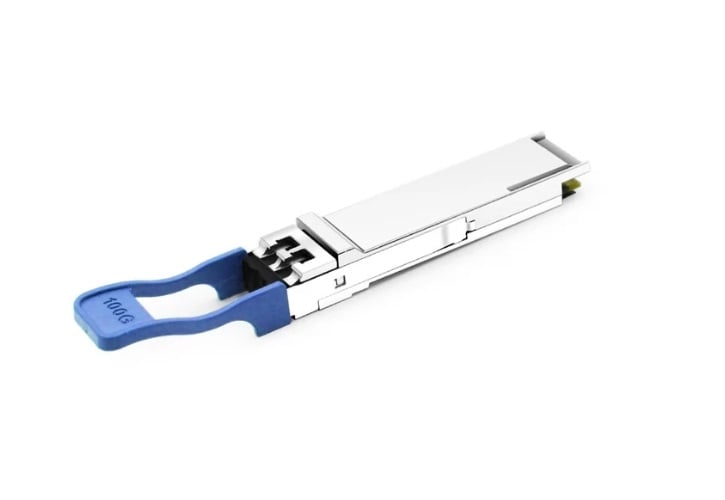
Comparing SFP, SFP+, and QSFP Modules
SFP (Small Form-factor Pluggable): The SFP transceiver (small form-factor pluggable transceiver) is widely used in both telecom and datacom applications. It can support up to 1Gbps speed and is hot-swappable, so it allows easy upgrading or maintenance without any disruption of network operation. These modules usually work within 100km distance and are typically applied with Ethernet and Fibre Channel.
SFP+ (Enhanced Small Form-factor Pluggable): As an upgraded version of SFP, the SFP+ (small form-factor pluggable plus) module achieves a higher data rate, which can be as fast as 10Gbps. Similar to SFP, it supports hot swapping and is used for high-density connections that require more bandwidths in networking areas. They are commonly used in enterprise networks, data centers, and high-performance computing. Additionally, they can cover distances ranging from 100m over multimode fiber(MMF) to 40km over single-mode fiber(SMF).
QSFP (Quad Small Form-factor Pluggable): A QSFP transceiver offers higher data rates than others at around four times the speed at up to 40 Gbps. This makes them suitable for use where there may be a large number of connections in close proximity, such as data centers or environments requiring significant capacity, such as high-capacity networks. By using multiple channels per module, QSFP technology maximizes the use of available fiber infrastructure.
Each type of these transceivers has its own advantages: SGP suits common needs well, SPF+ works better for faster speeds, and QSPF should be chosen for situations where very dense deployments with large amounts of capacity available on demand are needed.
Applications of Fiber Optic Transceivers
Fiber optic transceivers are necessary for today’s network infrastructure in many different fields. In the telecommunications industry, they enable long-distance transmission and form the basis for metro as well as regional networks. SFP, SFP+, and QSFP fiber optic transceivers are widely used in data centers because they can handle high data rates required by cloud computing, storage area networks (SANs), and fast links between servers and switches. Also, these transceivers are employed by enterprise networks to create reliable and scalable local area networks (LANs) that deliver high-speed internet access and support video conferencing systems along with other bandwidth-intensive applications like internal communications among staff members of an organization. Fiber optic transceivers’ flexibility, combined with their high performance, makes them indispensable components within Internet Service Providers (ISPs), where they ensure stable connection quality while providing fast internet speeds for end-users. Additionally, fiber optic transceivers play significant roles not only in industrial applications such as automated control systems but also within the healthcare sector, which heavily relies on high-resolution imaging equipment and telemedicine services, among others.
Choosing the Right Transceiver for Your Network Needs
Determining the most fitting optic fiber transceiver for your network depends on some criteria. The first one is to assess data rate and distance required; typically, SFP modules support 1Gbps up to short distances while SFP+ modules support 10Gbps over middle distances and QSFP modules offer speeds of up to 100Gbps which are fit for longer ranges. It is important that you match the transceiver with switch or router ports, as this will determine its compatibility with existing network infrastructure. Evaluate the optical budget, which indicates the maximum distance a given transceiver covers depending on signal strength and receiver sensitivity. Another major consideration should be cost, where the total cost of ownership should be considered, i.e., initial purchase, maintenance, and potential future upgrades must all be factored in. Finally, the application environment, such as whether it’s a high-density data center or an enterprise network with diverse device interconnections, also needs consideration. By considering these aspects well, you will be able to select a transceiver that meets your immediate requirements and scales effectively with future growth in the network size.
How to Ensure Compatibility with Transceiver Modules?
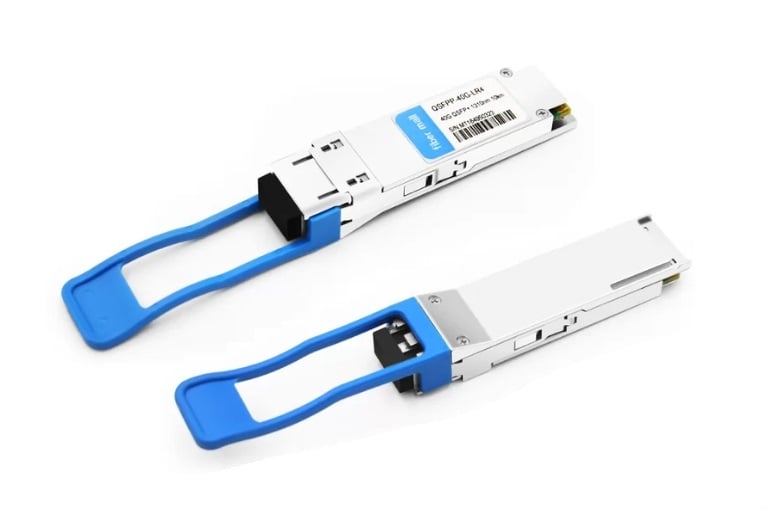
Understanding Transceiver Specifications
To avoid the transceiver modules being incompatible with each other, it is very important to know what they require. The differentiating factors are SFP, SFP+, and QSFP, among others, that specify the physical form and electrical interface, which must be compatible with your network equipment. Another attribute is data rate, which can be indicated in gigabits per second; this should match both the network port and intended application requirements. For instance, wavelength decides the type of fiber used, where 850nm works for multimode fibers while 1310nm or 1550 nm works for single-mode fibers, directly affecting transmission distance. The interface type indicates the connection method, e.g., LC connectors, SC connectors, MTP/MPO connectors, etc. You also need to ensure that such transceivers comply with applicable standards like IEEE8023 because such conformity indicates wider usability. Last, but not least, confirm if the switch or router vendor supports it; some manufacturers may have strict compatibility lists or demand firmware updates for specific models of transceivers. It would, therefore, be wise to look very deeply into these details so as to achieve optimal performance and make them interoperable over a given network system.
Compatibility with Cisco and Other Network Brands
It is important to know what Cisco and other network devices have specified to operate with them. For instance, every Cisco switch or router has a list of compatible transceiver models. It even provides the recommended type numbers and firmware versions they require strictly. Normally, these records can be seen either on their website or in published information about the products.
Additionally, transceivers are designed by many manufacturers to meet MSA standards; hence, they can work well within different brands like Juniper, HP, or Arista switches. Keeping this in mind will help ensure that these modules will function properly with non-Cisco equipment.
Another thing is that there exist online platforms where people share their experiences concerning combinations of specific types of transceivers and networking gears – compatibility matrices, too, may be found here sometimes. Such resources become very handy when one needs assurance about interoperability across diverse environments. A person should, therefore, select an optic based on the official data given by a manufacturer, together with some other suggestions made by users who have tried them before so as to cover all corners of his/her network infrastructure compatibilities.
Debunking Myths About Transceiver Compatibility
Sometimes, while dealing with transceiver compatibility, myths tend to appear, which can impede effective network management. Here, we discuss these misconceptions and refute them by citing brief insights from some of the most popular websites.
Myth 1: The only reliable transceivers are those manufactured by the Original Equipment Manufacturer (OEM).
One of the commonest fables is that for a network to be reliable, it must use transceivers produced by the Original Equipment Manufacturer (OEM). However, a lot of third-party transceivers meet or even exceed OEM specifications. Typically, these modules are subjected to a series of tests to ensure they can work in different environments without any compatibility issues as well as perform better across various platforms.
Myth 2: Using Third-Party Transceivers Nullifies Warranties
People usually worry that installing third-party transceivers on their network devices may void the warranty. Most nations prohibit manufacturers from tying coverage terms to the usage of their own parts according to principles governing free-market economies. For this reason, provided that such accessories adhere to relevant standards and other statutory regulations, warranties shall remain valid.
Myth 3: Inferior Performance Offered by Third-Party Transceivers
There is also an idea that using non-OEM optics will lead to poor performance within networks. Nevertheless, thanks to technological advancement coupled with strict manufacturing processes, most of these products are now capable of matching the original ones regarding quality and functionality. Additionally, extensive tests on different platforms have further confirmed their reliability in real-world scenarios based on feedback received from customers who have used them alongside various systems.
By addressing these misconceptions, administrators will be able to make better choices and exploit wider options while not risking failure or degradation within their systems, which might arise due to limited flexibility or higher costs associated with branded components.
What are the Benefits of Using Fiber Optic Transceivers?
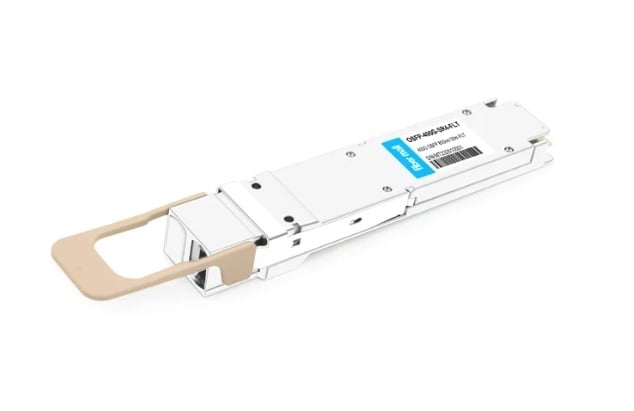
Advantages of High-Speed Data Transmission
Fast data transfer provides many significant benefits that are needed in modern networking environments.
- More bandwidth: High-speed data transmission has a much wider bandwidth than typical copper cables. Thus, higher amounts of data can be moved by such means. This is necessary for video streaming, cloud computing, or large-scale data centers.
- Better reliability: Fiber optic cables used for high-speed data transmission are not easily affected by electromagnetic interference and physical damage. As a result, network performance becomes more reliable with fewer interruptions which is important for continuous connection establishment.
- Long-range capabilities: Copper cables have nothing on fiber optic technology when it comes to transmitting information over long distances without signal degradation along the way. This feature is very useful, especially for large industrial networks that may span different continents, thus ensuring the integrity of transmitted data throughout vast areas.
- Reduced latency: High-speed systems characterize low transmission time delays, which lead to quicker response times needed by real-time applications like online gaming, financial trading, or VoIP services.
- Scalability: Infrastructure supporting fast transferring of files can undergo unlimited expansion. Therefore, it is possible to increase the capacities of already existing systems whenever the need arises without necessarily starting afresh thereby safeguarding initial investments made on laying down the groundwork.
These benefits highlight why the efficient, reliable, and future-proof performance of networks depends on the swift exchange of information.
Enhanced Reliability and Network Performance
Several things need to be considered for high-speed data transmission to enhance its reliability and network performance:
- Fiber Optic Technology: Upgrading the telecommunications infrastructure to fiber optics can greatly improve reliability. Electromagnetic interferences do not affect these cables, so they rarely lose data and also ensure that devices keep a steady connection even in places with many electrical appliances.
- Redundancy and Failover Mechanisms: When hardware breaks or there is an unexpected blackout, networks need additional paths and automated failover mechanisms to maintain continuity of operation without compromising speed. The continuous flow of information requires continuous availability.
- Advanced Error Detection and Correction Protocols: These are error detection protocols used in modern networking technologies. They detect errors as soon as data packets pass through them, correcting them on the fly, thereby increasing data integrity, which leads to reliable communication across high-speed networks.
Together, these methods create more dependable systems while contributing to their stronger performance, which is vital in current data-driven applications.
Long-Distance Data Transmission Capabilities
Improvements in technology have vastly boosted long-haul data transmission abilities over the years. This has made it possible for enormous volumes of information to be conveyed across large areas with very little loss. Dense Wavelength Division Multiplexing (DWDM) is one of the key technologies that enable this. Using DWDM, several light wavelengths can be used to send data simultaneously through a single optic fiber cable thereby increasing its bandwidth and improving efficiency in transmission.
Another important aspect is the use of optical amplifiers like Erbium-Doped Fiber Amplifiers (EDFAs), which regenerate optical signals without converting them into electrical ones again. This amplification carries data signals through large distances, thus eliminating frequent signal regeneration and reducing latency.
Finally, Forward Error Correction (FEC) techniques are used to correct errors before they occur during transmission. This ensures that the integrity and dependability of information are maintained, especially in cases where it has to be sent over long distances with a high chance of getting corrupted.
Together, these technologies increase network capacity for handling long-distance data transfers while ensuring minimal degradation in performance levels or loss of data integrity at any point along the way.
How to Install and Maintain Transceiver Modules?
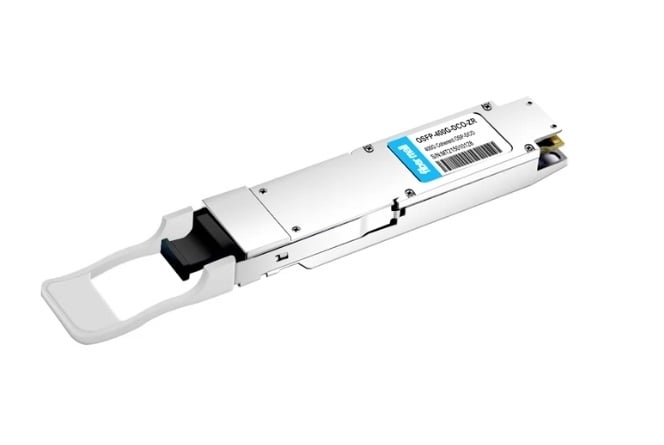
Step-by-Step Installation Guide
- Unbox the Transceiver: Start by gently unpacking the transceiver module from its wrapping. Be careful when handling; touch only at the edges to prevent damage due to static discharge.
- Examine it: Perform a visual check for any noticeable damages or faults on the transceiver. In case of need, wipe the connector with a lint-free cloth to confirm that it is clean and free from dust particles or other contaminants.
- Prepare Network Device: Power down your network device before installing this transceiver module. This will prevent both units from getting damaged.
- Insert Transceiver Module: Line up pins located at the bottom side of this module with corresponding holes found on the device’s slot, then gently push downwards until latches click into place correctly—do not force anything, as such action can break either part involved here.
- Fix Module Securely: Once fully inserted, use whatever locking mechanism provided by the manufacturer so as to hold it firmly within position inside the host equipment (e.g., flip the lever down or tighten the screw).
- Restore Power Connection: Switch back on the power supply once all the above steps have been completed successfully. Wait for system recognition, which might include a brief initialization phase.
- Ascertain Correctness of Installation Ascertain Correctness of Installation: Look out for LED indicators’ behavior change; also, carry out diagnostic tests if available in order to ascertain functionality correctness after installation has been done;
- Connect Fiber Optic Cables Connect Fiber Optic Cables: Carefully insert fiber optic cables into appropriate ports of this transceiver module ensuring they fit well and are firmly tightened where necessary (e.g., LC, SC connectors).
- Test & Troubleshoot: Perform network testing procedures to verify whether data transmission/reception through different networks is successful using various modules. Please refer to your manual book should you encounter challenges during the troubleshooting process.
- Routine Maintenance Routine Maintenance: Regularly inspect cleanliness levels achieved within each component, including connectors used alongside these transceivers, so that optimal performance can be realized every time one is connected or disconnected. Watch out for firmware updates and apply them whenever applicable to align with the latest advancements and bug fixes released by manufacturers.
These instructions provide a complete guide on how to install and maintain transceiver modules which are crucial for efficient network operation.
Essential Maintenance Tips for Longevity
- Regular cleaning: Make sure the fiber optic connectors and transceiver modules are not dusty or have no other impurities. Use wipes without lint and the right cleaning solutions to ensure the integrity of the signal is not compromised.
- Firmware updates: Check occasionally for firmware updates from manufacturers and install them if you find any. These often include performance improvements and critical security fixes.
- Temperature monitoring: Keep temperatures within recommended ranges for operation in transceivers. High levels of heat can cause degradation in performance and also shorten their lives. It’s important that network equipment is placed in environments that are well-ventilated and temperature-controlled.
By following these care instructions, you will increase the lifespan and dependability of your transceiver modules, resulting in consistent network performance over time.
Troubleshooting Common Transceiver Issues
- No Signal Transmission: If the transceiver module is not transmitting a signal, the first step is to make sure it is seated correctly in the slot and that all connectors are properly attached. Then, check for damaged fiber optics or a mismatched wavelength with network requirements.
- Intermittent Connectivity: To troubleshoot intermittent connectivity problems, inspect physical connections for signs of wear or debris and clean if necessary. Also, confirm that the latest firmware has been applied to both the transceiver module and network equipment to prevent communication disruptions.
- High Bit Error Rate (BER): A high bit error rate could cause data loss and decrease network efficiency. Check signal strength and quality; ensure attenuation levels are within an acceptable range for your device. If the problem persists, replace cables and connectors for best performance.
These steps should effectively address common issues associated with transceiver modules, allowing them to work more reliably and at faster speeds on your computer system.
Reference sources
Frequently Asked Questions (FAQs)
Q: What is the transceiver module and what does it do?
A: The transceiver module is an electronic device that contains both a transmitter and a receiver in one package. It is created for communication systems to translate electrical signals into optical signals for fiber optic communications. These modules are typically employed in Ethernet networks, data centers, and Internet service providers.
Q: Why does the speed rating matter in transceiver modules?
A: The speed rating indicates how fast a transceiver module can transmit and receive information. Fast Ethernet (100 Mbps), Gigabit Ethernet (1 Gbps), and 10G Ethernet (10 Gbps) are some common speed ratings. The rate determines whether or not it will work with your network as expected.
Q: How can I tell if my transceiver module will work with my network equipment?
A: You must match up all of the specifications on your network gear such as switches, routers, servers etc., so they can communicate properly together without any issues arising later down the line. Some important things to look out for include interface types (e.g., SFP, SFP+), supported protocols, and speed ratings – just make sure everything matches correctly! Also, always check what brands are compatible with each other or if there are any limitations mentioned anywhere before buying anything new like this.
Q: Can I use different brand names when connecting these devices?
A: Yes, you may use many branded components since most modules were designed that way e.g., Cisco, Fortinet, or Aruba, among others but be careful because sometimes it’s not always guaranteed so please refer back to vendors’ specification sheets which tell us about their devices compatibility lists; also ensure purchasing from vendors who provides guaranteed compatibility such as FS.com.
Q: What separates Mini-GBICs from standard transceivers?
A: Mini-GBICs or Small Form-Factor Pluggable (SFP) transceivers are compact modules used for high-speed data transmission over fiber or copper cables. They are preferred because they can be plugged in and out easily without powering down the network equipment which makes it convenient during upgrades or replacements. On the other hand, Standard transceivers may have bigger sizes and less flexibility during deployment.
Q: What is the function of transceivers in a data center?
A: The reason why data centers cannot do without transceivers is that these devices enable fast exchanges of information between servers, switches and storage units. Without them, communication within complex data center environments would be impossible, leading to poor network performance and reduced efficiency of data flow.
Q: What does dark fiber mean? How do transceiver modules relate to it?
A: Dark fibre refers to those optical fibre cables which have been laid but are not in use. These cables can be lit up by transceiver modules so that they become active for transmitting data over long distances. This technology comes in handy especially when service providers want to increase network capacity without necessarily installing new fibre optic lines.
Q: Are there any particular models of transceivers for single-mode or multi-mode fiber systems?
A: Yes, there exist different types of transceiver models designed specifically for single-mode and multi-mode fiber systems. For instance, single-mode transceivers (e.g., operating at 1310nm) are mostly used in long-distance communication, covering up to 10km or more, while multi-mode ones offer high bandwidth within shorter ranges suitable for short distances.
Q: Can you use a transceiver on both copper and fiber optic cabling systems?
A: Indeed, you can utilize one type of a transceiver module either with copper or fiber optic cabling system. Copper SFPs are employed with Ethernet over copper cables while optical ones support fiber optic cables making them compatible with various network environments.
Q: How does plug-and-play work when it comes to deploying transceiver modules?
A: The plug-and-play feature enables easy installation or replacement of a transceiver without necessarily shutting down any network equipment. Therefore, this characteristic minimizes downtime during upgrading procedures, which makes it possible for system administrators to manage their networks more efficiently as well as expand infrastructure where necessary.
Related Products:
-
 QSFP28-100G-SR4 100G QSFP28 SR4 850nm 100m MTP/MPO MMF DDM Transceiver Module
$40.00
QSFP28-100G-SR4 100G QSFP28 SR4 850nm 100m MTP/MPO MMF DDM Transceiver Module
$40.00
-
 QSFP28-112G-SR4 112G OTU4 QSFP28 SR4 850nm 100m MTP/MPO MMF DDM Transceiver Module
$50.00
QSFP28-112G-SR4 112G OTU4 QSFP28 SR4 850nm 100m MTP/MPO MMF DDM Transceiver Module
$50.00
-
 QSFP28-100G-LR1 100G QSFP28 Single Lambda LR 1310nm 10km LC SMF with FEC DDM Optical Transceiver
$265.00
QSFP28-100G-LR1 100G QSFP28 Single Lambda LR 1310nm 10km LC SMF with FEC DDM Optical Transceiver
$265.00
-
 Q28-100G23-BX10 100G QSFP28 BIDI TX1271nm/RX1331nm PAM4 Single Lambda LC SMF 10km DDM Optical Transceiver Module
$500.00
Q28-100G23-BX10 100G QSFP28 BIDI TX1271nm/RX1331nm PAM4 Single Lambda LC SMF 10km DDM Optical Transceiver Module
$500.00
-
 QSFP28-100G-ER4L 100G QSFP28 ER4 Lite 1310nm (LAN WDM) 40km with FEC,30km without FEC LC SMF DDM Transceiver Module
$800.00
QSFP28-100G-ER4L 100G QSFP28 ER4 Lite 1310nm (LAN WDM) 40km with FEC,30km without FEC LC SMF DDM Transceiver Module
$800.00
-
 NVIDIA MMS1Z00-NS400 Compatible 400G NDR QSFP112 DR4 PAM4 1310nm 500m MPO-12 with FEC Optical Transceiver Module
$700.00
NVIDIA MMS1Z00-NS400 Compatible 400G NDR QSFP112 DR4 PAM4 1310nm 500m MPO-12 with FEC Optical Transceiver Module
$700.00
-
 NVIDIA MMS4X00-NS400 Compatible 400G OSFP DR4 Flat Top PAM4 1310nm MTP/MPO-12 500m SMF FEC Optical Transceiver Module
$700.00
NVIDIA MMS4X00-NS400 Compatible 400G OSFP DR4 Flat Top PAM4 1310nm MTP/MPO-12 500m SMF FEC Optical Transceiver Module
$700.00
-
 NVIDIA MMA1Z00-NS400 Compatible 400G QSFP112 VR4 PAM4 850nm 50m MTP/MPO-12 OM4 FEC Optical Transceiver Module
$550.00
NVIDIA MMA1Z00-NS400 Compatible 400G QSFP112 VR4 PAM4 850nm 50m MTP/MPO-12 OM4 FEC Optical Transceiver Module
$550.00
-
 NVIDIA MMA4Z00-NS400 Compatible 400G OSFP SR4 Flat Top PAM4 850nm 30m on OM3/50m on OM4 MTP/MPO-12 Multimode FEC Optical Transceiver Module
$550.00
NVIDIA MMA4Z00-NS400 Compatible 400G OSFP SR4 Flat Top PAM4 850nm 30m on OM3/50m on OM4 MTP/MPO-12 Multimode FEC Optical Transceiver Module
$550.00
-
 NVIDIA MMS4X00-NM-FLT Compatible 800G Twin-port OSFP 2x400G Flat Top PAM4 1310nm 500m DOM Dual MTP/MPO-12 SMF Optical Transceiver Module
$1199.00
NVIDIA MMS4X00-NM-FLT Compatible 800G Twin-port OSFP 2x400G Flat Top PAM4 1310nm 500m DOM Dual MTP/MPO-12 SMF Optical Transceiver Module
$1199.00
-
 NVIDIA MMA4Z00-NS-FLT Compatible 800Gb/s Twin-port OSFP 2x400G SR8 PAM4 850nm 100m DOM Dual MPO-12 MMF Optical Transceiver Module
$650.00
NVIDIA MMA4Z00-NS-FLT Compatible 800Gb/s Twin-port OSFP 2x400G SR8 PAM4 850nm 100m DOM Dual MPO-12 MMF Optical Transceiver Module
$650.00
-
 NVIDIA MMS4X00-NM Compatible 800Gb/s Twin-port OSFP 2x400G PAM4 1310nm 500m DOM Dual MTP/MPO-12 SMF Optical Transceiver Module
$900.00
NVIDIA MMS4X00-NM Compatible 800Gb/s Twin-port OSFP 2x400G PAM4 1310nm 500m DOM Dual MTP/MPO-12 SMF Optical Transceiver Module
$900.00
-
 NVIDIA MMS4X50-NM Compatible OSFP 2x400G FR4 PAM4 1310nm 2km DOM Dual Duplex LC SMF Optical Transceiver Module
$1200.00
NVIDIA MMS4X50-NM Compatible OSFP 2x400G FR4 PAM4 1310nm 2km DOM Dual Duplex LC SMF Optical Transceiver Module
$1200.00

